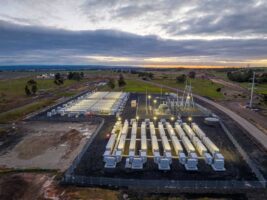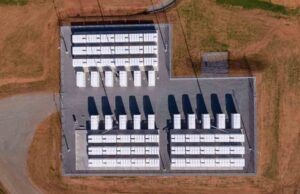The Australian Energy Market Operator has placed an “urgent” sign on the need for new wind, solar and storage capacity, and new transmission links, to help cope with the anticipated mass exodus of another five coal generators before the end of the decade.
AEMO, in its annual assessment of potential future market deficits known as the Electricity Statement of Opportunities (ESOO), says there is more than enough capacity in the pipeline to meet Australia’s electricity needs as coal retires, but not enough of this new capacity has reached the “committed stage.”
At least not yet. And its concerns are amplified by the threat of delays to projects, including the new Project Energy Connect link between South Australia and NSW, which already appears to be running one year late.
AEMO notes that there is 7.3GW of what it calls “committed” generation, and another 3.4GW – mostly wind, solar and battery storage” – of what it calls “anticipated” projects.
Strangely, these include some projects, like the Torrens Island battery in South Australia and the country’s biggest wind farm at MacIntyre in Queensland, that have visibly already started construction.
If this “anticipated” capacity is built – as most people expect they would be – then there are no short-term issues with grid reliability, apart from the risk of more extreme weather events and failing coal and gas generators.
With these assets, and added transmission lines, the threat of breaching the new, tighter, “interim reliability standard” is pushed out to the end of the decade. Still, AEMO wants more capacity in anticipation of even more rapid closures of ageing thermal capacity and to mitigate further delays.
It’s important to note here that AEMO takes a very conservative view of what is “committed” and what is “anticipated”. Even its anticipated list does not include the detailed NSW and Victoria government plans for their respective renewable roadmaps, including their auctions planned for new renewable energy zones.
That’s one of the problems with the ESOO. It is designed to inform the market where the best investment opportunities lie, but is often used for headlines that scream “blackouts” on the assumption that this investment does not occur.
One of the reasons some projects have not been committed is the uncertainty surrounding the design of market rules, although the change of federal government, its commitment to 82 per cent renewables by 2030, and the injection of environment and emissions into the national electricity objective, should smooth the path.
AEMO notes that its Integrated System Plan identifies some 45GW of new wind solar and “firming” investment that will be required to deal with the anticipated exit of most of the country’s coal generators, and it wants the market to get a move on, both with new generation and new transmission links.
“The report reiterates the urgency of progressing generation, storage and transmission developments to maintain a secure, reliable and affordable supply of electricity to homes and businesses,” AEMO CEO Daniel Westerman said in a statement.
“Forecast reliability gaps have emerged across NEM regions due to considerable coal and gas plant closures, along with insufficient new generation capacity commitments needed to offset higher electricity use.”
But Westerman makes it clear that “should the 3.4GW of anticipated generation and storage projects, alongside ISP actionable transmission projects, be delivered to their current schedules, then reliability standards would be met in all regions of the NEM until later in the decade when more large thermal generators exit.”
These “anticipated” projects include the huge, and already financed and contracted, Riverina big battery, the 104MW Karara wind project which is part of the massive 1GW MacIntyre project that has actually begun construction, the MacIntyre project itself, and the Tailem Bend battery that is about to begin construction.
Others on the “anticipated” list include the 250MW Torrens Island battery that has also begun construction, and EnergyAustralia’s announced Wooreen battery that is also about to begin construction.
Westerman notes there is a much bigger proposed pipeline of 113GW of variable renewable energy (VRE) and 53GW of dispatchable resources (including battery, pumped hydro, and other technologies) that demonstrate the opportunity for the market to respond to any emerging reliability gaps.
This graph above illustrates the forecasts for reliability, assuming that the “anticipated projects” do go ahead. There is a blip above the interim reliability measure in NSW in 2025, around the time that the country’s biggest coal fired generator Eraring is scheduled to retire.
That may explain the NSW government’s recent decision to tender for around 400MW of “firming capacity” to ensure that the major load centres are properly serviced.
Victoria is forecast to test reliability standards once Yallourn closes in late 2028, and NSW again at the end of the decade as Vales Point retires. But both state governments have put in plans – offshore wind in Victoria, an infrastructure roadmap in NSW – that the ESOO document does not recognise as “anticipated.”
Still, Westerman says the grid cannot afford any more delays. The report also notes the likelihood that demand will actually increase in coming years as electrification becomes commonplace in homes and businesses, and as the uptake of electric vehicles also accelerates.
See also: Market operator not told of Snowy 2.0 delays, but it won’t be missed much











